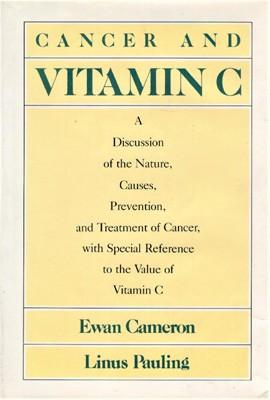
[An exploration of Ewan Cameron and Linus Pauling’s influential – and controversial – 1979 book. This introductory post is part 1 of 9.]
Despite all of the research that goes into cancer, relatively little progress has been made in its treatment — at least, that was the conclusion that Linus Pauling had arrived at in the 1960s. Long interested in the subject, Pauling was frustrated that many of the treatment options that had been developed helped to prolong life, but usually failed to cure disease.
As someone who often looked first to chemistry in his search for answers, Pauling increasingly came to believe that his growing interest in the power of vitamins might hold the key to not just treating cancer but curing it. By the 1970s, Pauling had teamed up with a key collaborator, Scottish physician Ewan Cameron, and in 1979 the duo published an important book titled Cancer and Vitamin C.
Beginning in the 1960s, Pauling’s scientific gaze began to focus on the connection between the potential connection between optimal health and vitamins, and he eventually came to theorize that many diseases could be sourced to vitamin deficiencies. By extension, Pauling surmised that if a deficiency of vitamins could cause disease, then perhaps an increase in vitamins could help stave off or even reverse an illness. Doing so, however, was not merely a case of the patient taking a few supplements. Instead, Pauling reasoned that massive amounts of a vitamin were often necessary.
This approach to treating disease – commonly referred to as megadosing – blossomed into a new field, which Pauling labeled “orthomolecular medicine.” Convinced that this work had great promise, Pauling co-founded an institute devoted to advancing the research, much of which he and his collaborators published in both the scientific and popular literature. Orthomolecular medicine, in Pauling’s view, could help cure maladies ranging from the common cold to schizophrenia. And while many vitamins were of interest to Pauling, one in particular took on central importance: vitamin C.
In 1979, Pauling and Cameron completed work on Cancer and Vitamin C, a popular text in which the authors attempt to persuade their readers to agree with two basic ideas: one, that vitamin C is powerful enough to treat cancer; and two, that the treatment regimen they outline actually works. Over the next three weeks, we will explore Cameron and Pauling’s endorsement of vitamin C from three different angles. After that, we will dig into an analysis of the book itself, including important updates on new research that were incorporated into a 2018 reissue of the volume.
